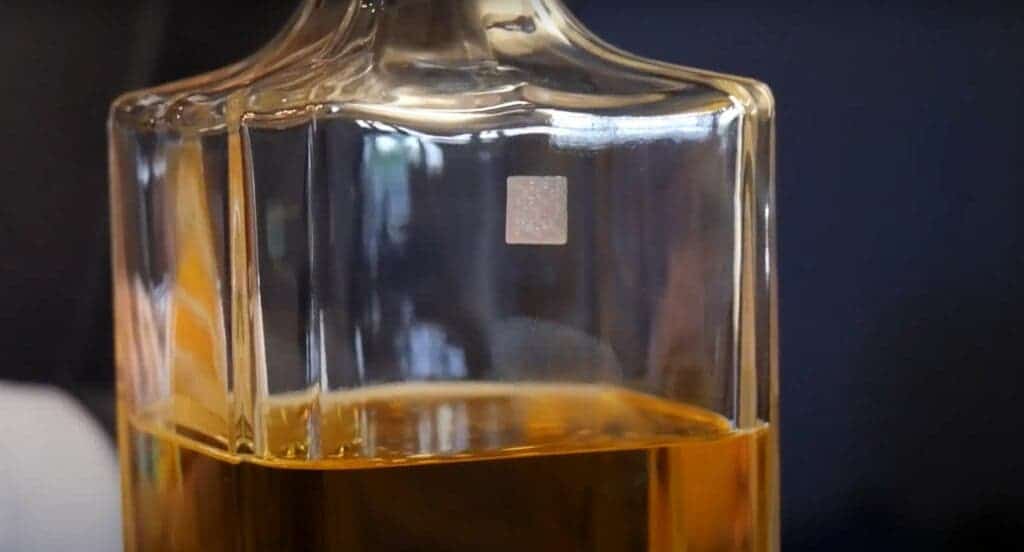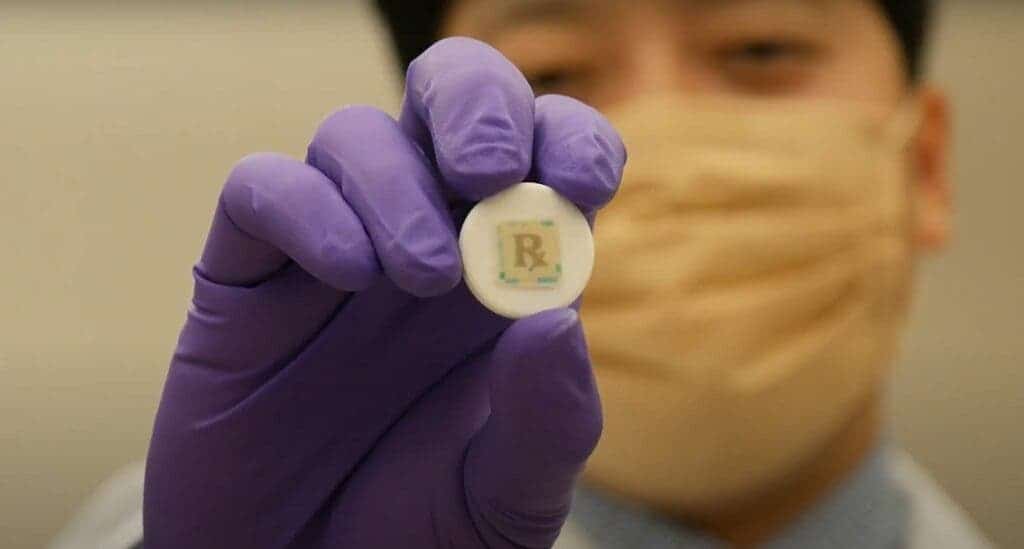A team of researchers from Purdue University and South Korea’s National Institute of Agricultural Sciences have created an edible QR code tag that can let the customers know if the whiskey they are drinking is what it’s supposed to be — or whether it’s a fake. This unique piece of technology has the potential to solve the fake whiskey problem for good, but it could be applied to other fields as well.

According to a report, about 30% of the expensive vintage whiskey sold in secondary markets and auctions is fake. The Scottish Universities Environmental Research Centre (SUERC) performed a random inspection of 55 rare scotch whiskey bottles in 2018, finding that many of these bottles selling for thousands of dollars were actually fake. A whopping, 40% (21 bottles) of the so-called “vintage scotch” turned out to be counterfeit products.
Fake whiskey is a big problem not just because it’s a scam, but also because many such drinks come overdosed with methanol and other harmful chemicals. It can lead to health issues ranging from stomach aches to loss of eyesight. Currently, counterfeit whiskey worth millions of dollars is estimated to be circulating in the global market, endangering people’s health and giving a big financial blow to the whiskey industry by affecting their sales every year.
One of the authors of the study and associate Professor at Purdue’s Weldon School of Biomedical Engineering, Young Kim told Designboom:
“If I were asked to pick the most vulnerable goods for counterfeiting, I will pick pharmaceutical products and as well as high-value alcoholic spirits. One of five adults in the UK experience counterfeiting, so we believe that the counterfeit alcoholic spirit is one of the most troublesome products that affect human health.”
The science behind the edible QR code technology

There is no easily available device or technique for whiskey lovers to instantly detect fake whiskey and this is where the QR code (QR = Quick Response) powered tag technology can make a difference. The researchers claim that their tag can be used as proof of authenticity by whiskey manufacturers. All they need to do is put the tag inside every whiskey bottle they sell. Users could scan the QR code using their smartphones and confirm the originality of the drink.
Moreover, the tag is made of fluorescent silk protein, so it can be consumed along with the drink without causing any risk. According to the researchers, it is edible, digestible, and won’t affect the quality or taste of the whiskey in any way. They developed the QR code tag from a biopolymer composed of processed silk cocoons. When asked about the durability of the silk tag while it floats in the bottle, Professor Kim explained that this is a common practice:
“Researchers apply alcohol to silk proteins to make them more durable. Because they tolerate alcohol, the shape of the tag can be maintained for a long time.”
The tag is not just made for whiskey
The QR code on the edible silk tag can not be seen with the naked eye but what’s more interesting is that the researchers aim to use this same technology for liquid medicines so that people could be saved from buying illicit pharma products — which is potentially a much greater problem than that of whisky. Professor Kim highlights that nowadays anyone including teenagers can easily buy medicines online, but we don’t really know what’s in these products.
Using their technology, anyone easily can confirm the authenticity of medicine by simply scanning the code printed on the tag. The researchers believe the edible QR code tags could play an important role in empowering end users to solve the fake alcohol and medicine problem across the globe.
The study is published in the journal ACS Central Science.
Was this helpful?



